After years bouncing around France, I’ve realized packing for this country is trickier than it seems. You can’t just toss things in a suitcase and hope for the best.
Between Paris’s cobblestones and the French Alps’ rugged trails, every region and season throws its own curveballs. What works in Nice won’t cut it in Lyon come December.
Honestly, the secret to packing for France is nailing versatile pieces—stuff that goes with everything and feels right, whether you’re at a seaside café or climbing a mountain. I’ve come to swear by a handful of essentials that have saved my trip more than once, whether I’m sunbathing on the Riviera or dodging rain in Normandy.
Here’s my list of 10 must-haves for any French adventure. I’ll sprinkle in some seasonal tips, hacks for keeping your suitcase under control, and the kind of practical advice you only pick up after a few travel mishaps.
Let’s get you ready for everything France throws your way, from spontaneous café stops to those planned mountain escapes.
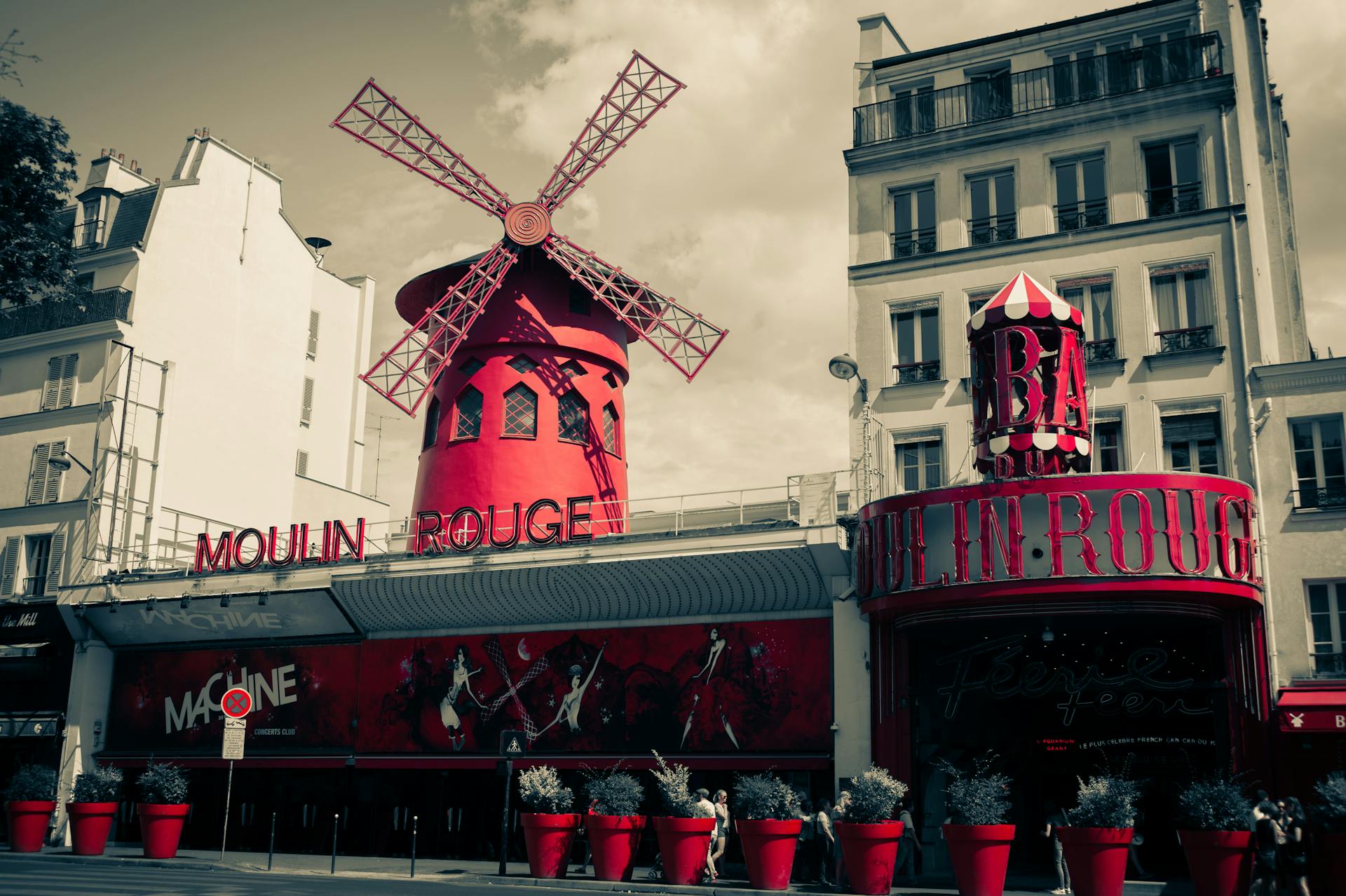
France Packing List: 10 Essentials for Every Region & Season
To really enjoy France, you need to pack smart. The weather and activities change fast. I’ve learned to protect my passport, pick clothes that multitask, and bring shoes that handle both city walks and country hikes.
Travel Documents and Passport
Your passport is non-negotiable. I always tuck mine into a waterproof holder—rain and spilled coffee are real threats.
Make two copies of your passport’s photo page. I stash one in my bag and leave another with someone back home.
Don’t forget these:
- Valid passport (double-check the expiration)
- Travel insurance info
- Flight confirmations
- Hotel reservations
- Emergency contacts
In busy spots like Paris or Nice, I use a neck wallet or hidden money belt. Pickpockets love obvious tourists.
Snap photos of all your important docs and save them on your phone. You never know when you’ll need a quick backup.

Versatile Clothing for City and Countryside
France’s weather loves to keep you guessing. I lean into clothes that layer easily and mix-and-match for different moods and temps.
My go-to clothing:
- Dark jeans or trousers
- Basic tees in neutral shades
- Lightweight cardigan or sweater
- Blazer for dinners out
- Scarf (for both warmth and flair)
A trench coat is my ride-or-die for France. It shrugs off light rain and works everywhere, from casual strolls to nice restaurants.
I grab cotton and linen for summer. For winter, wool blends keep me warm in the Alps and up north.
One nice outfit is a must. French restaurants expect you to look the part, especially after dark.
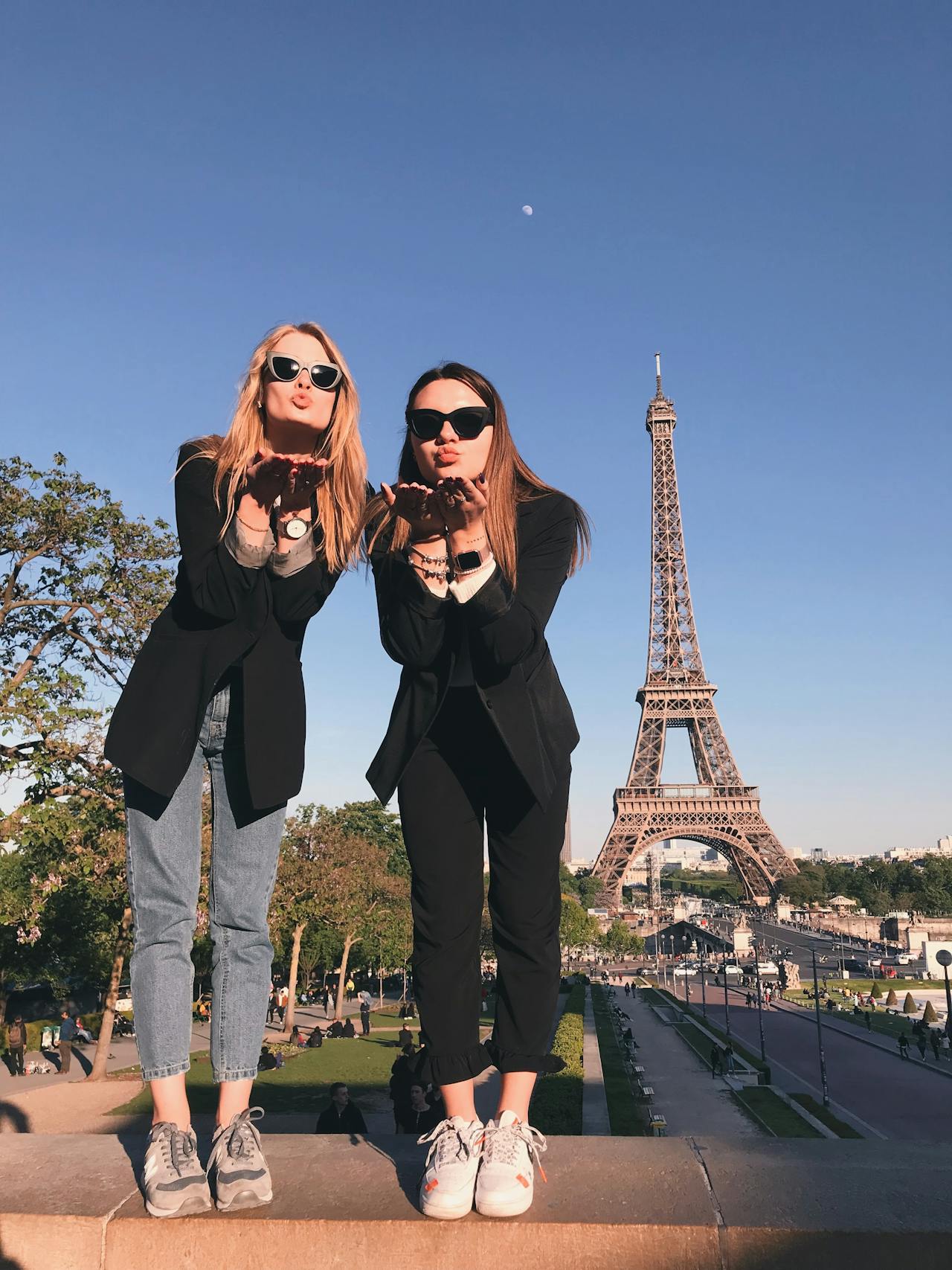
Footwear for Urban Walks and Alpine Trails
French cities demand serious walking. I bring comfortable shoes that survive 15,000 steps and don’t scream “tourist.”
Must-have shoes:
- Walking shoes with arch support
- Waterproof boots (for rain or trails)
- A pair of dressy shoes
- Hiking boots if you’re heading to the Alps
Break in your shoes before the trip. Blisters mid-vacation are a nightmare.
Stick with shoes that go with everything—black or brown leather works for both jeans and dresses.
If you’re hitting the Riviera, toss in a pair of comfy sandals. I make sure mine have straps so they don’t fly off during a beach walk.
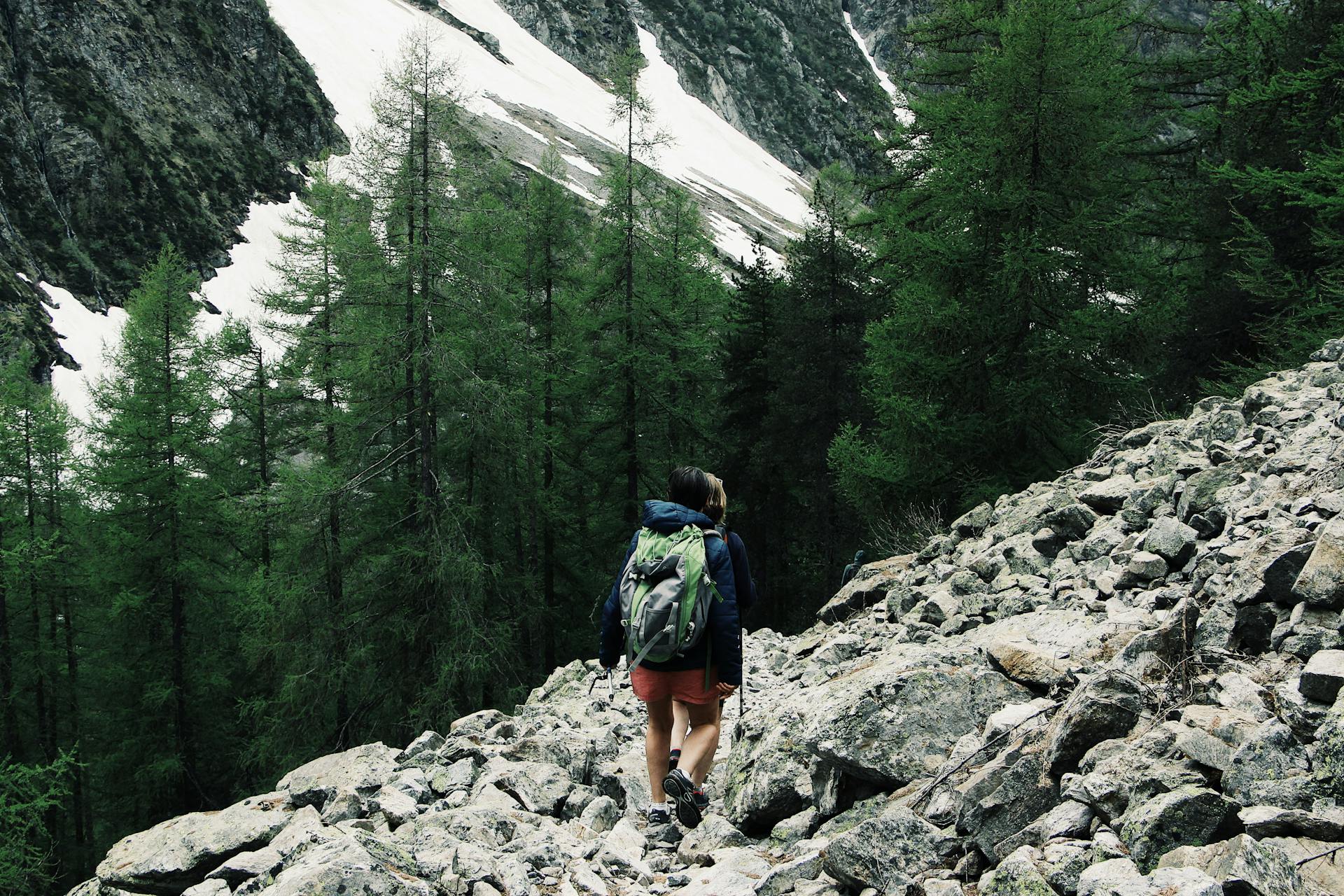
Packing for France’s Seasons and Top Destinations
France’s climate is all over the map. I’ve been caught in surprise rain in Paris and nearly melted in Nice, so I always tweak my list depending on where and when I’m going.
What to Pack for Paris Year-Round
Paris weather loves to keep travelers on their toes. I always bring layers because mornings can be chilly and afternoons surprisingly warm.
My Paris musts:
- Grippy walking shoes for those slick cobblestones
- Light waterproof jacket or classic trench
- Versatile scarf for extra style points
- Compact umbrella (never leave it behind)
Spring means mild days, cool nights—sweaters and jeans work well. Summer rarely gets hot, so I stick to cotton shirts and easy pants.
Fall brings more rain and cooler air. I reach for a warm jacket and waterproof shoes. In winter, only a heavy coat, gloves, and hat make Paris walks bearable.
Paris packing by season:
| Season | Temperature | Must-Have Items |
|---|---|---|
| Spring | 50-65°F | Light jacket, closed-toe shoes |
| Summer | 60-75°F | Breathable fabrics, sun hat |
| Fall | 45-60°F | Waterproof jacket, warm layers |
| Winter | 35-45°F | Heavy coat, winter accessories |
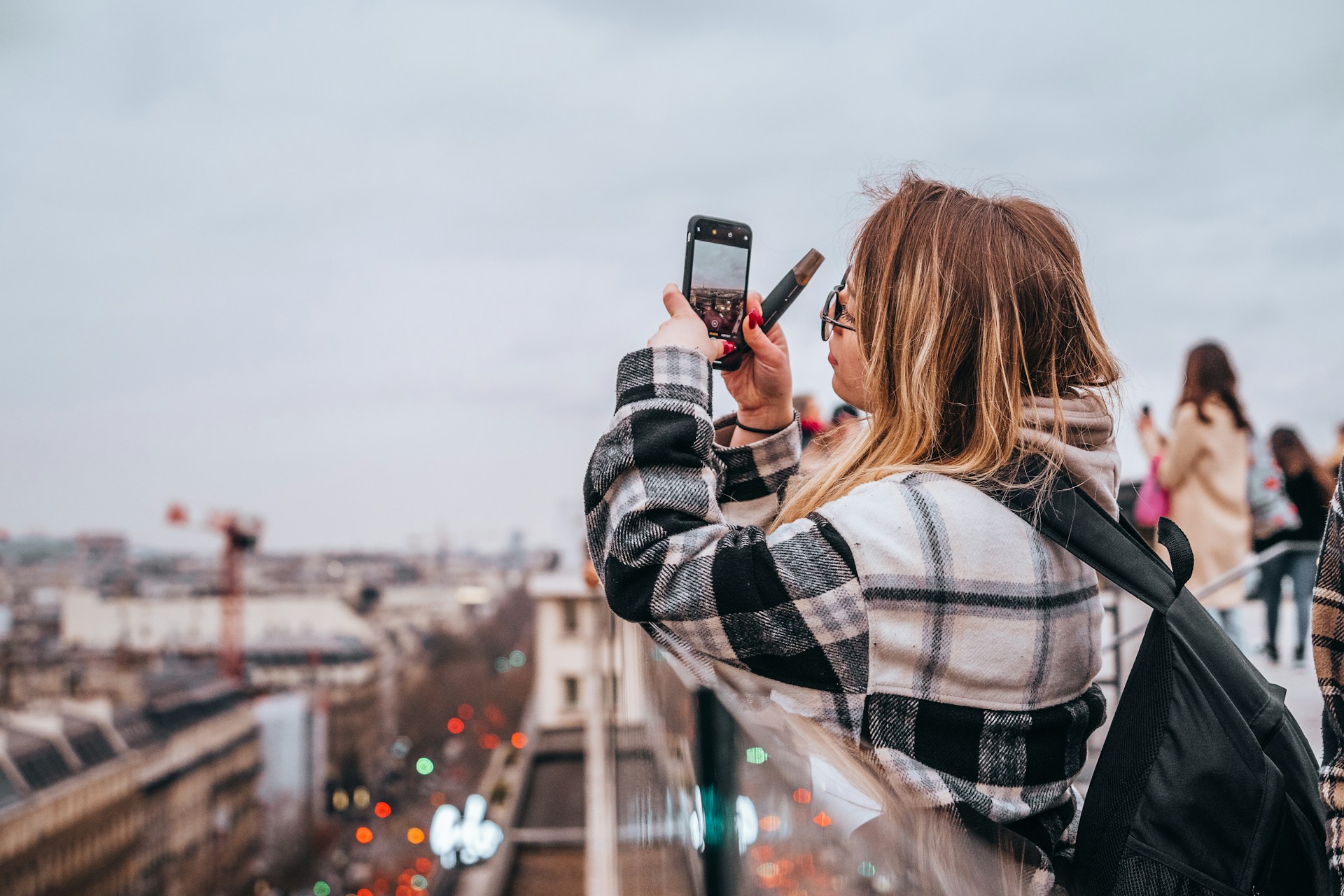
French Riviera Summer Staples
The French Riviera turns up the heat from June to September. I pack like I’m splitting time between the beach and a fancy dinner.
Beach essentials:
- SPF 30+ sunscreen (don’t skimp)
- Wide-brimmed hat
- Good sunglasses
- Lightweight cover-up
For Nice’s pebble beaches, I bring water shoes. Saint-Tropez? You’ll want your chicest swimwear.
Evenings feel breezy by the sea. I toss in a light cardigan or shawl for dinners out. Most restaurants expect smart-casual at night.
What I wear:
- Linen or cotton shirts (breathe easy)
- Comfortable sandals
- One nice dress for evenings
- Light pants for chilly, air-conditioned spots
The sun here is no joke. After getting burned on day one in Cannes, I never forget extra sunscreen.
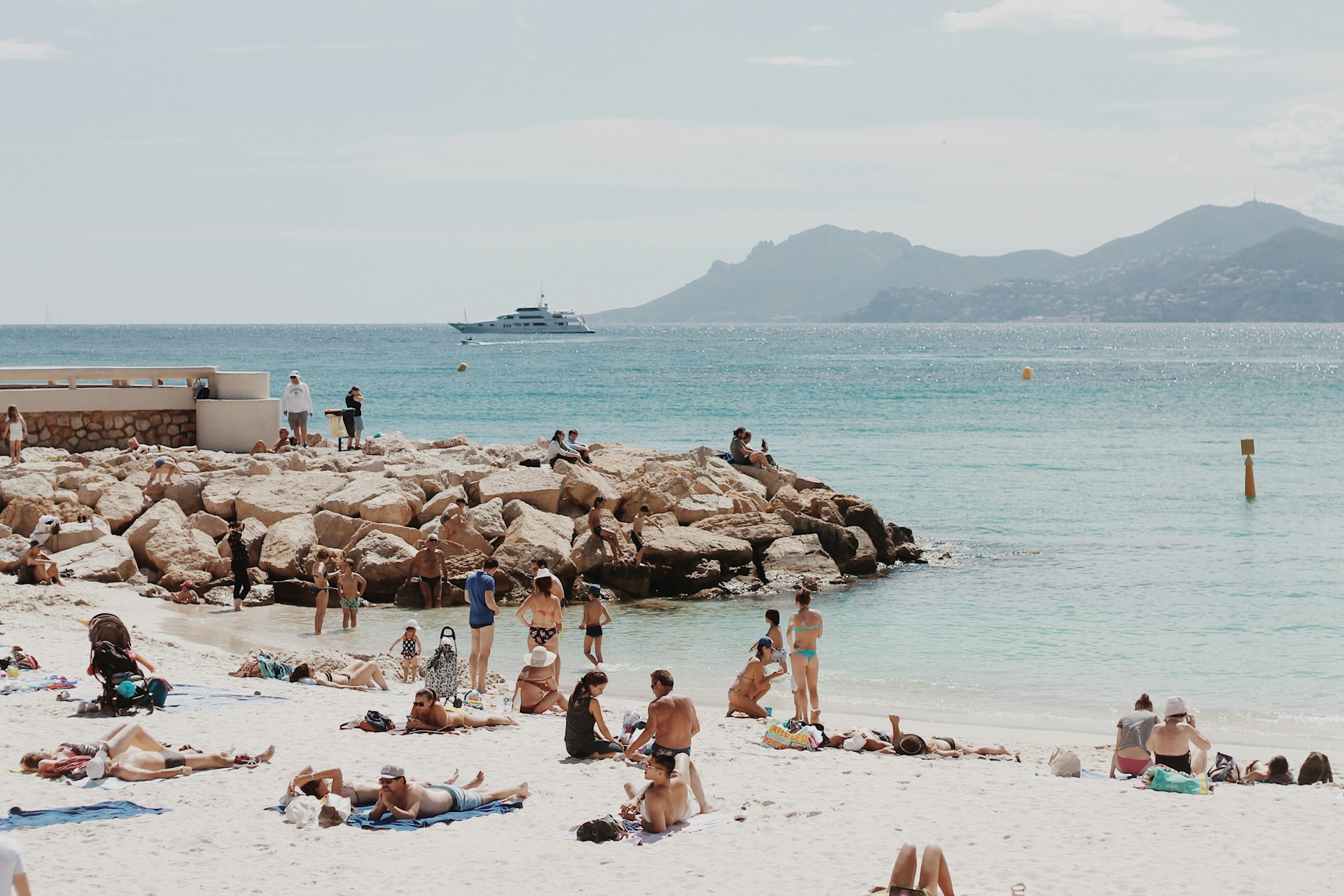
Provence and Bordeaux in Spring and Fall
Shoulder seasons in Provence and Bordeaux are a dream—warm days, cool nights, and fewer crowds. Perfect for wine tours and countryside drives.
Provence brings warm afternoons and chilly nights from April to June. I dress in layers for the swings. Fall feels much the same.
Wine country packing:
- Closed-toe shoes for vineyard strolls
- Light jacket for chilly cellars
- Casual pants (wineries frown on shorts)
- Small crossbody bag for tastings
Bordeaux is a bit cooler and rainier. I always pack a rain jacket. The wine scene is classy, so I go smart-casual.
Spring flowers make for epic photos. I like to wear brighter colors that pop against lavender fields and vineyards.
Other tips:
- Dust-resistant clothes for the fields
- Comfy shoes for old villages
- Light scarf for unpredictable weather
- Notebook for wine notes (if you’re nerdy like me)

Winter Gear for the Alps and Mountain Regions
If you’re heading to the French Alps, winter means business. I go full-on with technical gear for snow and cold.
Winter must-haves:
- Waterproof ski jacket and pants
- Thermal layers (top and bottom)
- Insulated, waterproof boots
- Warm hat (cover those ears!)
- Waterproof gloves
Mountain weather flips fast. I layer merino wool under waterproof shells—it works for both skiing and exploring snowy villages.
Temps to expect:
- Resorts: 0-20°F
- Valleys: 20-35°F
- Heating varies, so be ready
I toss in hand and foot warmers for deep-freeze days. The sun bounces off the snow, so high SPF sunscreen and good goggles are essential.
Evenings drop below freezing. A warm down jacket is perfect for après-ski or wandering mountain towns.

Smart Travel Accessories and Organization
Accessories can make or break your France trip. These four are my go-tos for staying organized, secure, and ready for anything—whether I’m sipping espresso in Paris or sampling rosé in Provence.
Packing Cubes and Compression Bags
Packing cubes have saved my sanity. They turn suitcase chaos into organized bliss.
Medium cubes fit shirts and pants. Small cubes are for underwear and socks. Large cubes handle sweaters or jackets.
Compression bags are game-changers for bulky stuff. I squeeze my winter coat into one, especially if I might need it for chilly trains or nights.
How I organize:
- Cube 1: Tops and blouses
- Cube 2: Bottoms and dresses
- Cube 3: Undergarments and sleepwear
- Compression bag: Heavy or off-season clothes
This system means I never have to unpack everything. When I hop between cities, I just grab the cube I need.
I like cubes with mesh tops—you can see what’s inside. Color-coding helps, too.
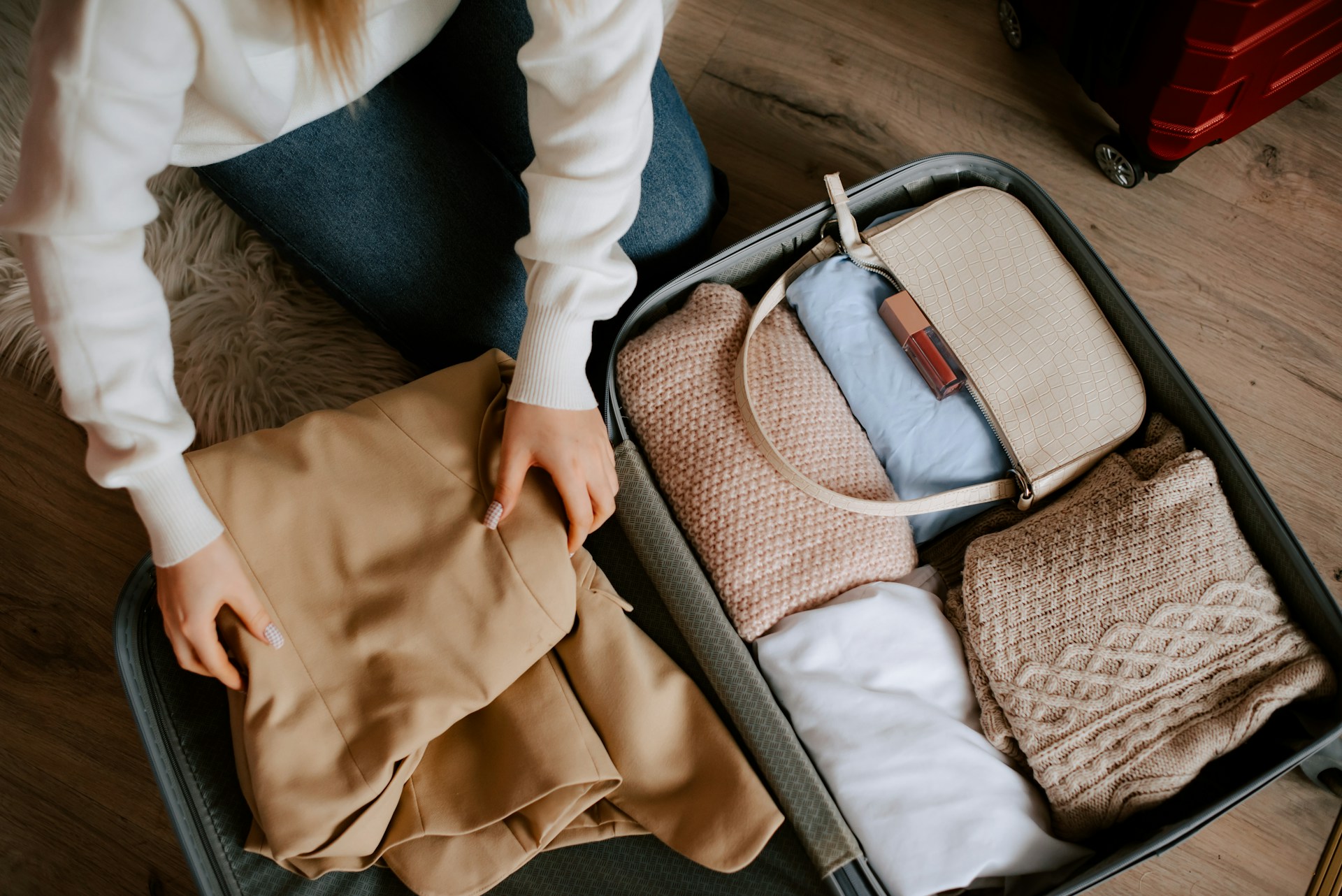
Crossbody Bag and Anti-Theft Tips
A crossbody bag is a lifesaver. It keeps my essentials close and my hands free for photos (or pastries).
I look for bags with multiple zippers and RFID blocking for cards.
Size is key. I want it big enough for my phone, wallet, and camera, but not so big it gets in the way. Leather or water-resistant fabric handles French weather best.
Anti-theft features I count on:
- Locking zippers
- Cut-resistant straps
- Hidden pockets
- RFID protection
I always wear it across my body, bag in front, especially in crowded metro stations or touristy spots.
Never set your bag down in cafés. Loop it around your chair or keep it on your lap. Pickpockets are sly—I’ve seen them in action near the Eiffel Tower.
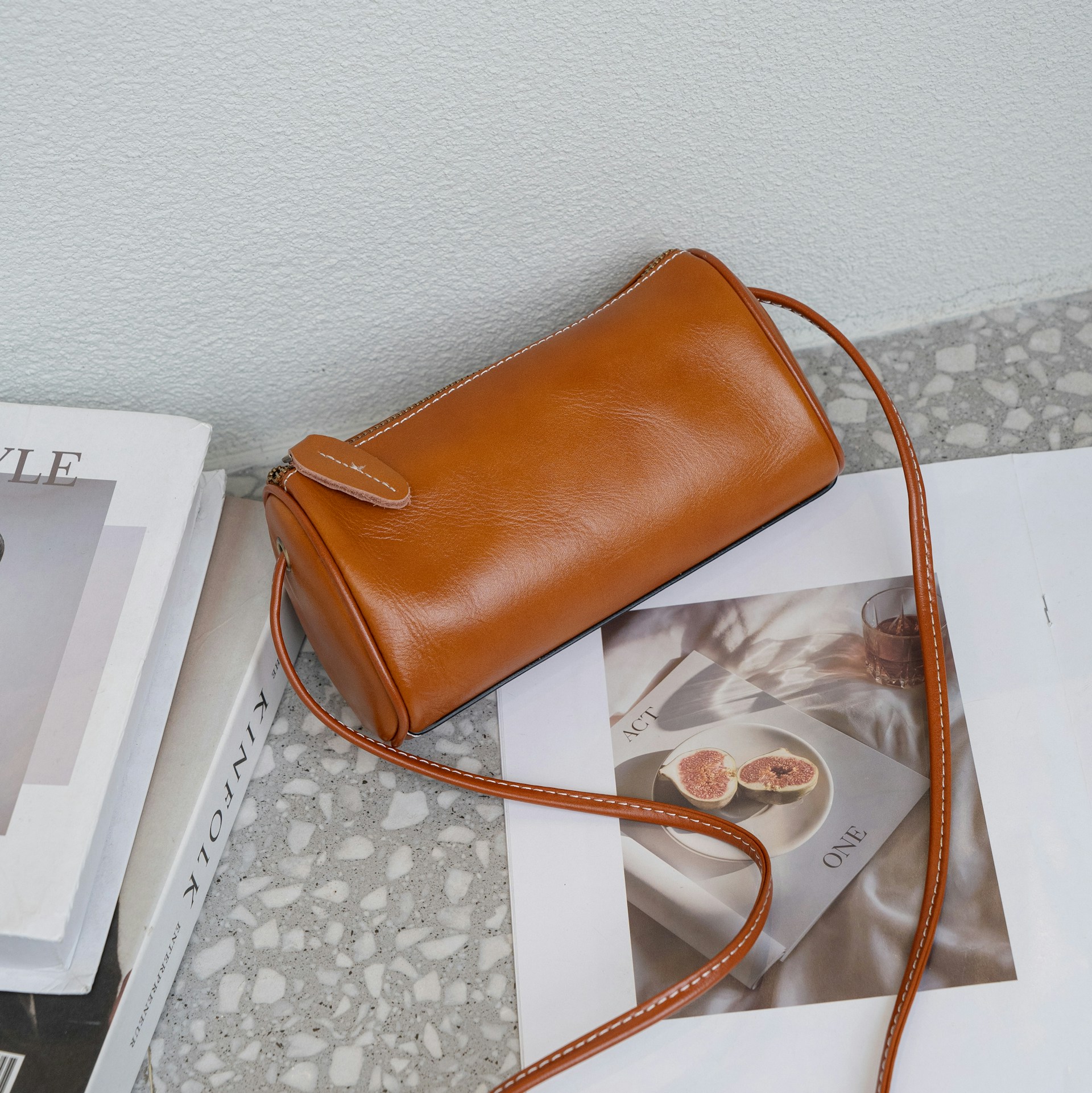
Reusable Water Bottle and Hydration
France’s tap water is great, and public fountains are everywhere. My reusable bottle saves money and keeps me hydrated on marathon sightseeing days.
Insulated bottles keep my water cold, even during Lyon’s summer heat. I love wide-mouth bottles—they’re easy to fill and add ice.
I stick to bottles around 20-24 ounces. Any smaller, and I’m refilling all day. Larger ones get heavy fast.
Where I fill up:
- Wallace fountains in Paris
- City center fountains
- Restaurants (just ask for tap)
- Hotels and train stations
In restaurants, ask for “une carafe d’eau, s’il vous plaît” to get free tap water.
Collapsible bottles are awesome for hiking. They shrink down when empty and leave more room for wine or cheese (priorities).

Portable Power Bank and Chargers
A dead phone in France? That’s a nightmare. I always bring a power bank that charges my phone at least twice.
10,000-20,000 mAh is the sweet spot. Smaller ones die too fast; bigger ones weigh down my bag.
I like power banks with multiple ports—charging my phone and camera at once is a win. Fast charging is a lifesaver during quick coffee stops.
Don’t forget:
- Power bank (10,000+ mAh)
- Phone cable
- Camera charger
- European plug adapter (Type C or E)
French outlets are different. I buy adapters before I travel—airport ones cost a fortune.
I stash charging cables in different bags. If one gets lost, I’ve got backups. One cable lives in my day bag, another in my main suitcase.

Health, Hygiene, and Travel Safety
Staying healthy in France takes a little planning. I pack essential hygiene stuff, make sure my insurance is sorted, and always bring weather protection. A few medical basics and the right paperwork go a long way.
Hand Sanitizer and Toiletry Basics
I keep a 60ml hand sanitizer in my carry-on. It’s the perfect size for airports and trains, and it lasts for most trips.
My toiletry kit is simple and TSA-approved:
- Antibacterial wipes for hands and surfaces
- Toothbrush and toothpaste
- Shampoo and body wash (sometimes I use solid bars to save space)
- Deodorant (sticks travel better than sprays)
I always bring my own feminine hygiene products—French pharmacies have options, but I like what I know.
If I’m staying longer, I check out local pharmacies (look for the green cross). French pharmacists are super helpful with minor health stuff.
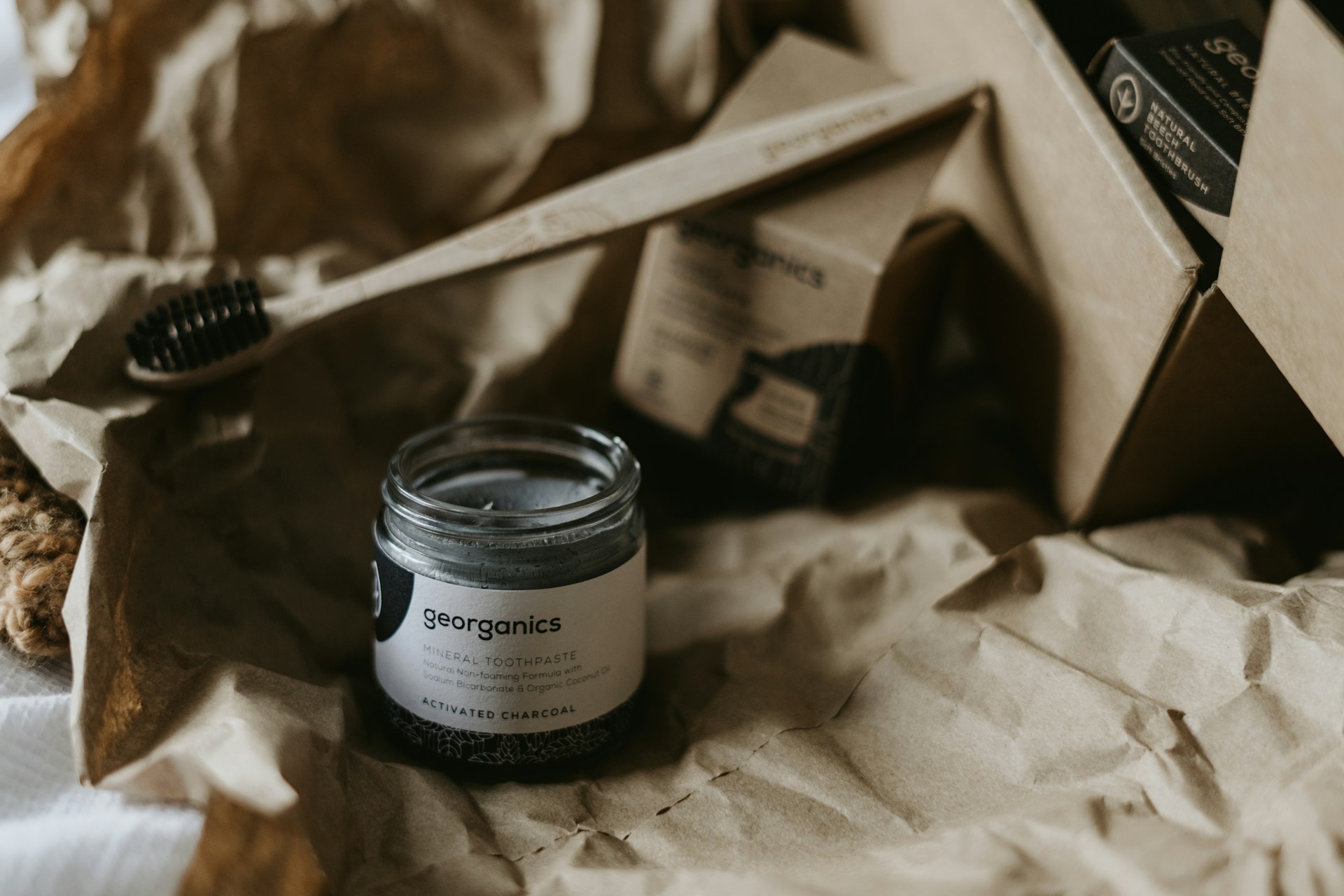
European Health Insurance Card (EHIC)
The European Health Insurance Card (EHIC) lets you access state healthcare in France at reduced costs. I always toss mine in my bag when heading out from other EU countries.
With my EHIC, I get:
- Emergency medical treatment
- Necessary healthcare while I’m in France
- Lower fees at public hospitals and clinics
I keep my EHIC in my wallet right next to my passport. Just a heads up—it won’t cover private healthcare or repatriation, so I always buy comprehensive travel insurance.
If you’re visiting from outside the EU, you’ll need travel health insurance before you go. French healthcare is fantastic, but it’s not cheap if you’re uninsured.
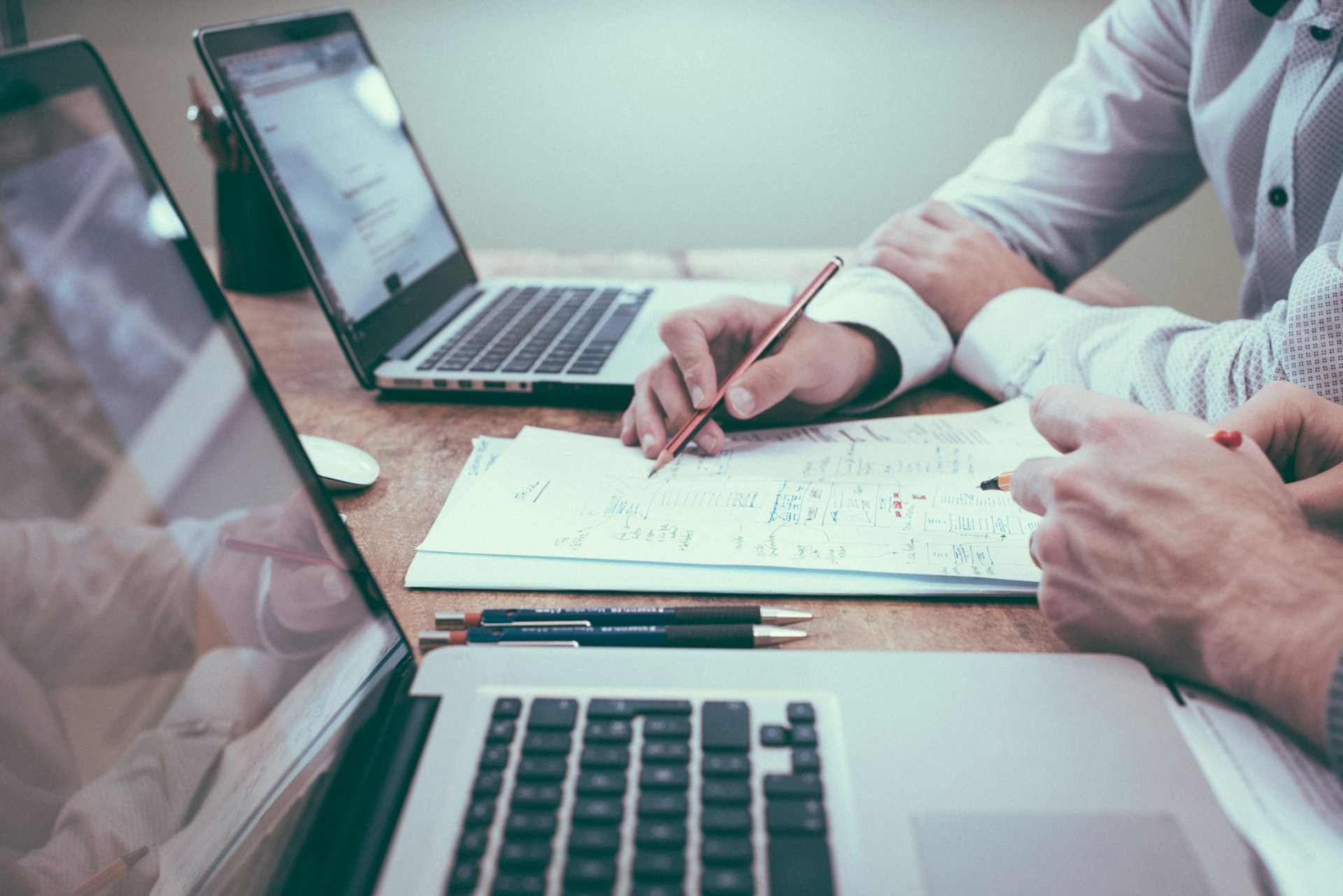
First-Aid Kit and Medication
A compact first-aid kit is a lifesaver. Mine fits easily in any suitcase and handles most minor travel mishaps.
Here’s what I never leave behind:
- Band-aids, antiseptic wipes, pain relievers
- Ibuprofen and acetaminophen for aches and fever
- Antihistamines for those surprise allergies
- Anti-diarrheal meds for stomach upsets
- Prescription meds in original packaging
I always bring a prescription letter from my doctor. It makes customs and pharmacy visits so much smoother if I need a refill.
Most French pharmacies carry familiar over-the-counter meds, but the brand names can be confusing. I look up generic names before my trip just in case.
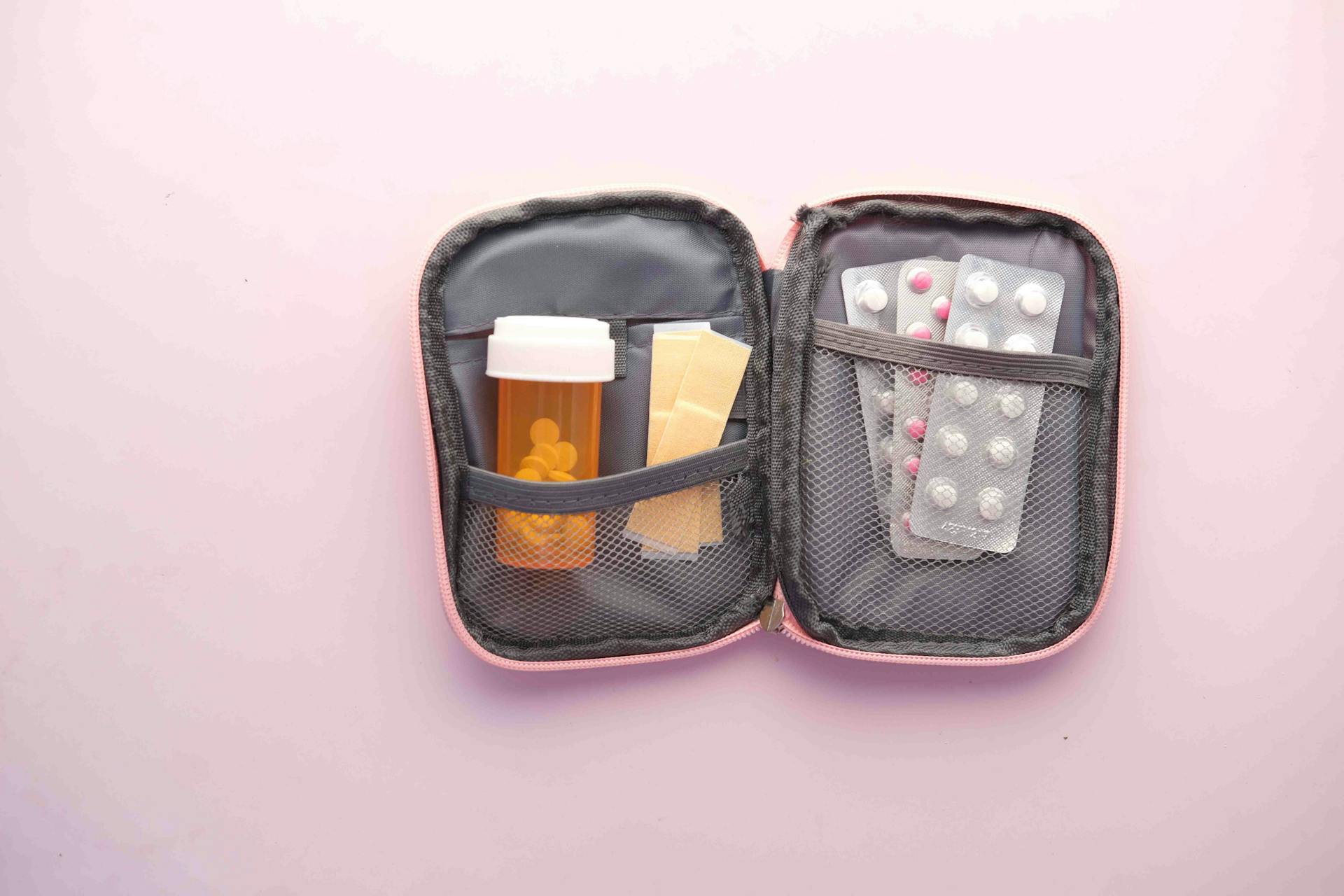
Travel Umbrella and Weather Protection
A compact travel umbrella is a non-negotiable in France. I go for lightweight models that slide into my day bag without fuss.
Rain can show up any time of year. My current umbrella weighs less than 200 grams and has a sturdy frame—a must after watching flimsier ones fall apart during a Paris storm.
Weather protection must-haves:
- SPF 30+ sunscreen for sunny regions and mountain glare
- Lip balm with SPF for all seasons
- Moisturizer for dry airplane air or changing climates
I stash a couple of plastic bags for my electronics. French weather loves to change its mind, especially in the mountains or along the coast.
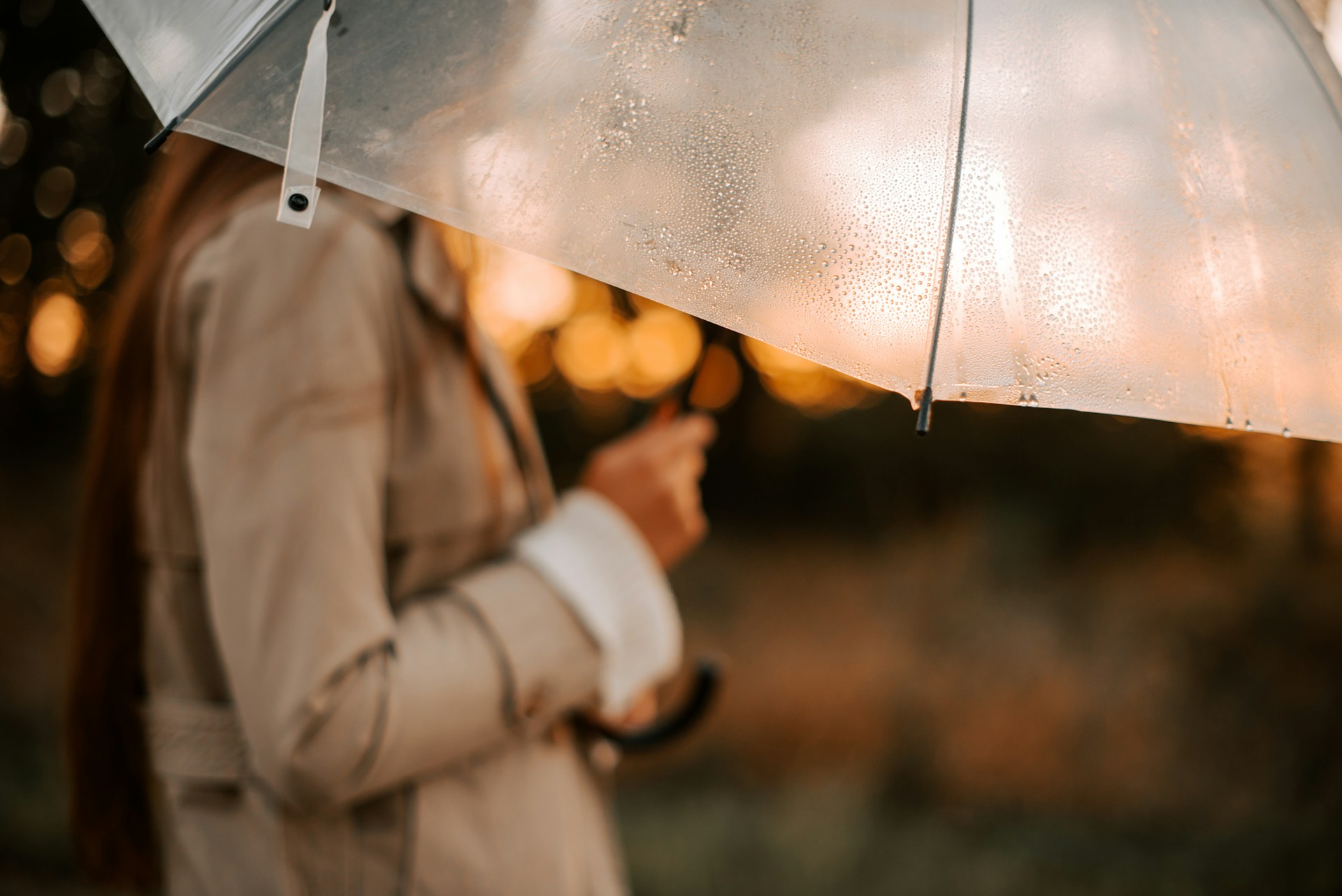
Staying Connected and Streamlining Your France Itinerary
Smart planning and a few trusty tools make exploring France so much easier. Offline maps, organized docs, and a touch of French flair help you stay prepared wherever you wander.
Offline Maps and Navigation
I always download offline maps before I leave. Google Maps lets you download whole regions for free, which is a lifesaver when WiFi drops out.
Maps.me is my backup. It runs totally offline and covers hiking trails that Google Maps skips. Super handy for the Alps or rural villages.
Download maps for:
- Your arrival city
- Each destination on your list
- Train routes between cities
- Hiking areas if you’re heading outdoors
Pro tip: Screenshot your hotel address and nearby landmarks. I save these in a separate photo album for quick access.
A small paper map still comes in handy. My phone battery never lasts as long as I want, and tourist offices usually hand these out for free.
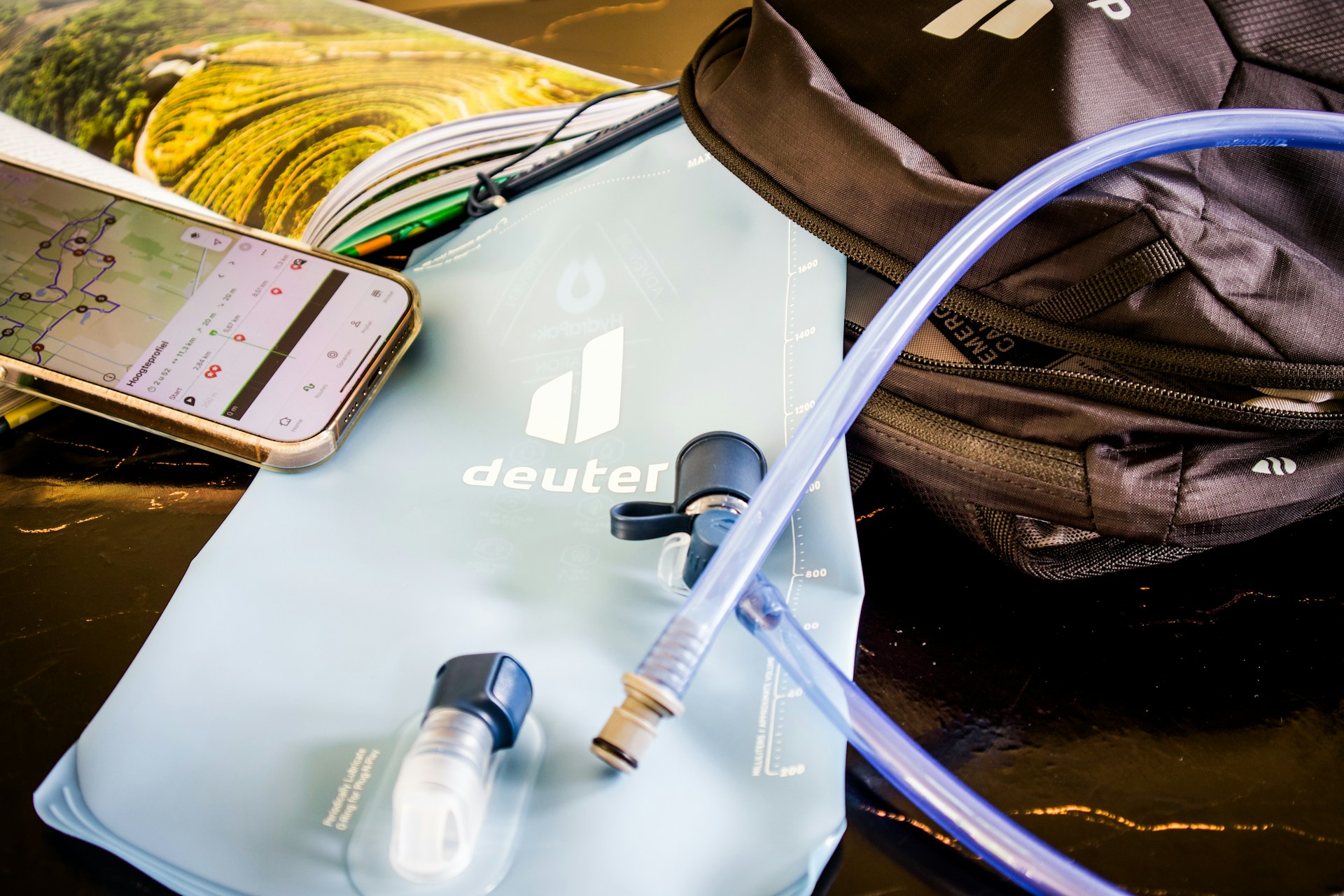
France Itinerary Planning
I keep my itinerary simple. One digital note holds everything: train times, hotel addresses, reservation codes.
Key info to include:
- Hotel check-in times and addresses
- Train ticket confirmations
- Restaurant reservations and phone numbers
- Museum entry tickets
- Emergency contacts
I print a copy and keep a digital backup. If I lose my phone, I still have the paper version tucked away.
Book train tickets early through SNCF Connect. It saves money and secures your seat. Regional trains are flexible, but TGVs require reservations.
I always give myself buffer time between activities. French trains sometimes run late, and museums might close for lunch. A little extra time keeps the trip stress-free.

Securing Valuables and Documents
When I travel in France, I use two bags for my documents. A money belt hides under my clothes for passports and backup cards. My crossbody bag holds the stuff I need during the day.
How I organize documents:
- Passport in money belt
- Photocopy of passport in day bag
- One credit card in money belt
- Another credit card in my wallet
- Cash split between both places
I scan all my important documents before I leave. Then I email copies to myself, just in case I need to replace anything.
Never leave valuables in plain sight in your car. French parking lots can be risky. I use hotel safes whenever I can.
A small lock is handy for hostel lockers. TSA-approved locks are best—they don’t get cut off at security.

Iconic French Accessories to Pack
A classic beret is practical and helps you blend in. Navy, black, or burgundy are my go-to colors.
French-inspired accessories I love:
- Lightweight silk scarf—works any time of year
- Crossbody leather bag (keeps hands free)
- Classic sunglasses with UV protection
- Simple jewelry that goes with everything
A sturdy umbrella is a must. French weather can flip in an instant, so I keep mine in my day bag.
French pharmacies have amazing skincare. I always leave space for Avène or La Roche-Posay. They’re way cheaper in France than back home.
A reusable water bottle is essential. French tap water tastes great, and public fountains make refilling easy.

Frequently Asked Questions
Packing for France depends a lot on the season and your destinations. Winter can drop to 30-40°F, while summer climbs to 70-80°F, so you’ll need to adapt whether you’re in the city or the mountains.
Go for breathable fabrics and sun protection—French summers hit 70-80°F. Cotton and linen are my favorites for hot days.
A couple of lightweight sundresses make up my summer wardrobe. I always bring comfy walking shoes for those endless cobblestone streets.
Sunscreen is a must. I throw in a wide-brimmed hat for outdoor markets or châteaux visits.
A light cardigan helps with chilly evenings and overzealous air conditioning. Even in summer, nights can surprise you.
A reusable water bottle keeps me hydrated, especially since you can refill for free at public fountains.
Winter in Paris means layering up for 30-40°F. I start with thermal underwear for warmth.
A stylish, cozy winter coat is non-negotiable. I look for one that fits in with Parisian style.
Warm boots with good grip are essential—waterproof if possible, since rain is common.
Scarves do double duty for warmth and style. I usually pack two in neutral shades.
Gloves and a warm hat finish the look. I prefer touchscreen gloves so I can snap photos or check maps easily.
Versatility is key. My hiking boots double as city walking shoes.
Layering is everything for changing temps. I pack moisture-wicking base layers and a fleece jacket.
A daypack works for both city adventures and mountain trails. I look for something comfy for all-day wear.
Rain gear is a must—my lightweight rain jacket folds up small and comes everywhere.
I bring hiking socks and city socks. My feet thank me later.
Spring in Paris swings from 50-70°F and brings plenty of rain. I stick to layers that I can easily add or peel off.
A waterproof trench coat is my go-to for wind and rain. Plus, it looks effortlessly Parisian.
A compact umbrella is a lifesaver—spring brings about nine rainy days each month.
Comfortable, water-resistant shoes are essential. I skip brand-new shoes to avoid blisters.
Light sweaters and cardigans help me adjust to shifting temps. I layer them under my coat as needed.
I stick to a coordinated color scheme—three main colors that mix and match for endless outfits.
A Type E power adapter is a must. I bring two, just in case one breaks.
Layering options are crucial. The Riviera stays warm, but northern and mountain regions can be chilly.
I pack both lightweight and warmer clothes. Weather can shift fast, especially in the mountains.
A pocket French dictionary is handy in smaller towns. I keep it in my carry-on for quick access.
When I head to Paris, I stick to just 12 versatile pieces. It sounds tricky, but mixing and matching makes it work.
Instead of folding, I roll my clothes. Honestly, it saves a surprising amount of space.
I always travel wearing my heaviest stuff—think boots and my thickest jacket. Why let them hog precious suitcase space?
Sticking to coordinated colors is a game changer. I pick one neutral base and everything else just falls into place.
Lightweight fabrics, like merino wool, are my go-to. They keep me warm without adding bulk, and they don’t wrinkle as much as cotton. That’s a lifesaver when you’re living out of a carry-on.
For longer trips, I just pack a week’s worth of clothes. If I need more, I find a laundromat or use the washing facilities that many Paris apartments offer. Makes life so much easier, doesn’t it?

